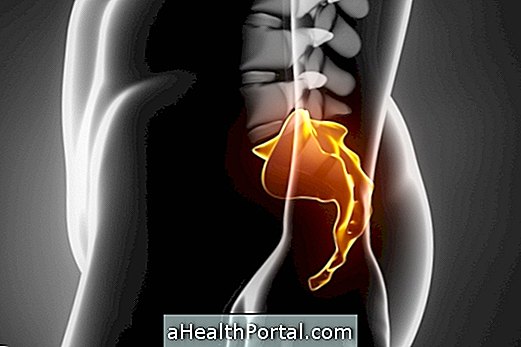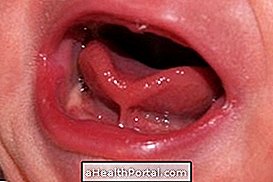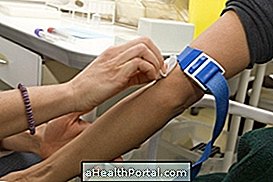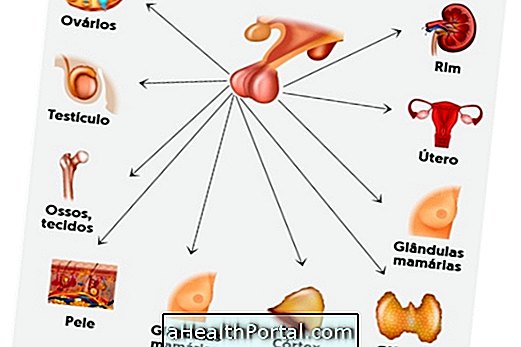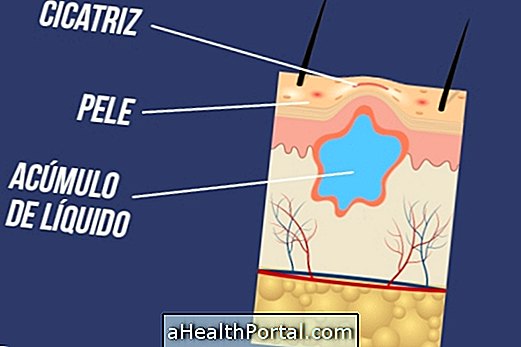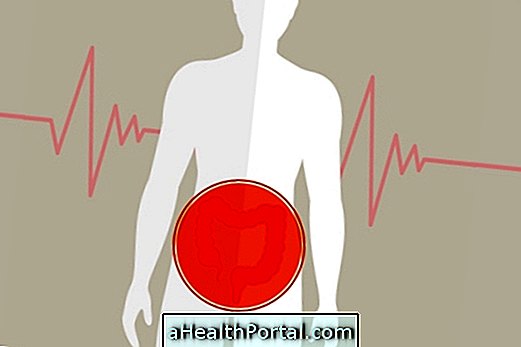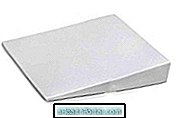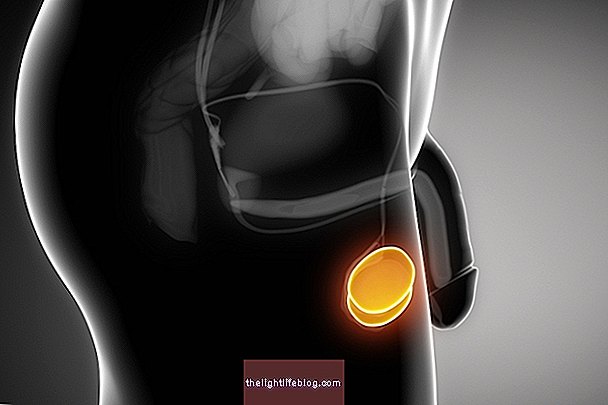The pain in the coccyx, although not very common, is not usually a sign of a serious problem, and is most often caused by situations such as falling on the floor or riding a bicycle for a long period of time, for example.
However, if the pain is very severe, if you do not allow walking, if it lasts longer than 1 week or if it is accompanied by other symptoms such as swelling or fever, it may be a sign of a more serious problem and therefore it is important to consult a to identify the problem and initiate treatment, which varies according to the cause.
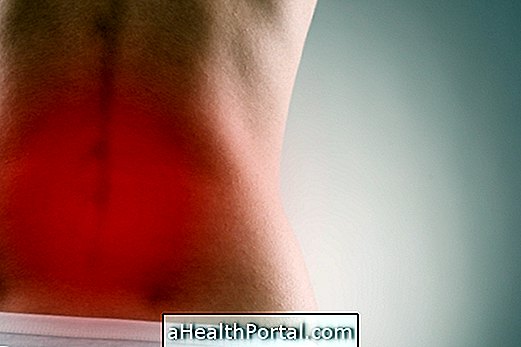
1. Fall or fall
Accidents that have a strong impact at the end of the spine, such as sitting or kicking during a sport, are the main cause of pain in the coccyx. Although most of the time, the pain disappears after a few minutes, there are cases where it can remain for a few hours or days, decreasing over time.
However, if the pain becomes more intense or if it is intolerable when sitting down, for example, it may be a sign that the blow has caused a fracture, which needs to be treated at the hospital.
- What to do : The easiest way to relieve the pain of a coccyx is to relieve pressure on the bone, so avoid sitting or lying on your back. In the first 48 hours, cold compresses can also be applied at the site to reduce inflammation and relieve pain.
2. Repetitive effort
Often practicing physical exercises like cycling or paddling or doing them for a long time can result in a repetitive strain injury, which means that muscles and ligaments are stretched and stretched, making it difficult to keep the bone in the place and causing the pain to appear.
- What to do : Pass an anti-inflammatory ointment with Diclofenac and avoid doing activities that put pressure on the coccyx.
3. Pregnancy
During the last 2 months of pregnancy, the bones of the lumbar spine, as well as the coccyx, become more flexible to allow the baby to pass during delivery. By increasing flexibility, the bone moves more freely and, for this reason, pain may arise, especially when sitting or standing up, for example.
What to do : Applying cold compresses on site and light massage can help relieve pain. However, to keep it from coming back so loudly, small changes can be made on a daily basis, such as sitting and standing up slowly or using a circle-shaped cushion open at the center to reduce pressure on the coccyx when sitting. Here's how to relieve other late-pregnancy discomforts.
4. Poor posture
Having a bad posture, especially when sitting, such as when working in front of the computer or driving, for example, can cause too much pressure on the coccyx, resulting in pain during the day.
- What to do : Doing a light massage at the pain site, as well as avoiding sitting too long can relieve pain, however, one should adopt techniques to try to have a correct posture during the day. Watch this video about exercises to improve posture:

5. Pilonidal cyst
The pilonidal cyst is a small infection that appears in the region of the coccyx and is caused by the accumulation of hairs and dead cells under the skin. In these cases, in addition to the pain in the place, that is getting worse over time, may also appear a small lump that is increasing in size.
- What to do : You need to go to the emergency room or health clinic to drain the pus from the inside of the cyst. In some cases, this treatment may be sufficient, however, if the cyst reappears it may be recommended to have a minor surgery to remove everything. See more about how the treatment is done.
6. Herniated disc
In some cases, pain in the coccyx may be triggered by problems elsewhere, and one of the most frequent is the development of a disc herniation in the lumbar region of the spine, for example. See other signs of a herniated disc.
- What to do : If there is a suspicion that the pain is being caused by a spinal problem, you should go to the orthopedist for tests, such as x-rays, to identify the correct cause and begin the best treatment.
7. Overweight
Being overweight ideally causes an overload on almost the entire body, especially in the coccyx when sitting. Over time, this excess weight on the coccyx may lead to mild but steady pain, which worsens when sitting.
- What to do : In these cases, the ideal is to lose weight to relieve excess pressure on the coccyx, however using an open circular cushion in the center whenever you sit can also help reduce pressure on the site. Also, sleeping sideways at night, instead of belly up, also helps the place to recover.
See if you're over your ideal weight using our IMC calculator:


